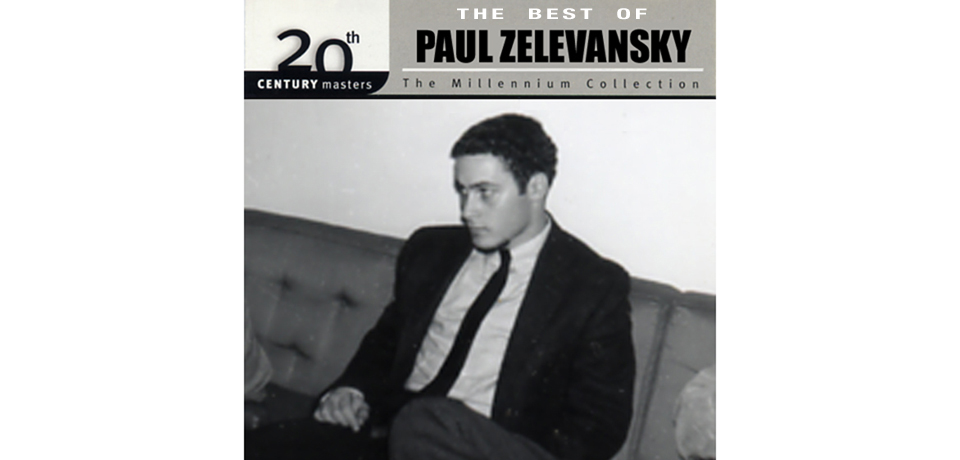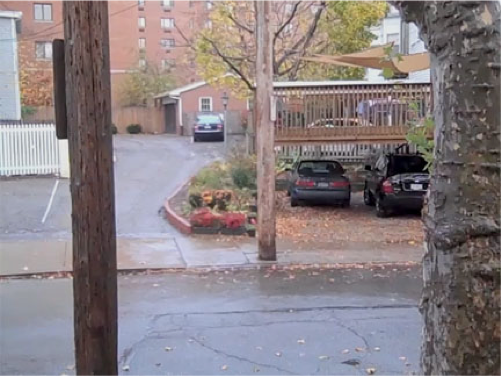Players in cyberspace are said to be electronically and metaphorically on-line. They are apart in the electronic dark, but also collaborators in some indeterminate, yet structured web of exchange. This ideal of connection provides a way to imagine concrete links between virtual messages and bodies, yet in cyberspace or at a crowded party there is still the need to reckon with the tangible and intangible, to measure familiar signs of location and direction against the hazards and seductions of the anonymous unknown.
As part of a series of videos where I sing pop standards wearing a Groucho Marx nose, glasses, and moustache, I created a mash-up duet with musical comedy actress Bernadette Peters. Sitting behind two large lilies in a vase, I sing Irving Berlin’s “I Wonder Why,” as Peters sings Rogers and Hammerstein’s “It Might as Well Be Spring.” My effort to harmonize with Peters was earnest and sincere, and even though I can stay on key, the gap between professional and amateur is clear. From the perspective of the audience, wearing the Groucho disguise allows me some critical distance as a clown figure seeking to join an experienced performer in song. People playing roles, like actors and clowns, do not have to live up to the characters that they mime, they just have to keep the audience engaged in the fiction.
“I’m as restless as a willow in a windstorm,
I’m as jumpy as a puppet on a string.
Oh why should I have spring fever,
When it isn’t even spring?”
(“It Might as Well Be Spring,” Rogers and Hammerstein)
On the other hand, the presence of the headphones proposes a concrete intimacy enabled by sound: I am presumably listening to Peters and the audience is watching me listen. Whether the headphones are in fact connected to a source–as one friend wondered–does not matter as long as the audience believes it facilitates the duet. As for Peters, wherever she is during the performance, her disembodied voice assures that her opinion of the collaboration is not an issue. Singing along in this way is no different than harmonizing with the car radio or walking along with an ipod, except of course that my performance is both public and private. The pleasure is mine. As the sound in one’s ears eliminates the discontinuities of time and space, the force of identification with lyrics, voice, melody, beat, and emotional appeal largely mitigates judgment even when the effort is public as in a karaoke bar.
“I hear singing and there’s no one there,
I smell blossoms and the trees are bare.
All day long I seem to walk on air,
I wonder why, I wonder why.”
– “(I Wonder Why) You’re Just in Love,” Irving Berlin
Then again, the video is an edited recording of a recording so when and how it happened becomes less important then when, where, and how it is viewed. The songs were of course chosen by me because their lyrics can function as commentaries on the video’s effects and premises, and in both cases the power of infatuation is key. Being in love, at least within the narrative arc of a song, often involves the loss of everyday perspective: the projection of one’s happiness onto the outside world; the pleasure of submission to disorientation, passion, and fantasy; the expectation that “starry eyes” or the “smell of blossoms” signals the possibility and presence of a sustainable love.
Yet if you look at the image of me sitting behind the flowers singing of spring, it is also possible to see this identification with love and the intoxications of the heart as a delusion, as would be the case with real-world infatuations which are sometimes not reciprocal, no less consummated. There is potential risk and loss in these expressions of longing which may not only be unresolved but also lead to emotional pain and separation.
“But I feel so gay, in a melancholy way,
it might as well be spring…”
In the video, when the first part of the duet ends, the scene shifts to a view outside a doorway onto a street in the rain. You can hear the rain but beyond a car passing by, nothing of import appears to be happening. Then the rain stops, and I begin singing the closing refrain of “It Might as Well Be Spring,” which is the song Peters was singing. For a few lines then, I am singing alone in the shower, until Peters returns to join me in the final lines that mix resignation with hope. We are all together at the end, Bernadette, the audience, and me, so “It might as well be spring…”
“Be there.”
At a recent academic conference in Morgantown, West Virginia, I witnessed another kind of electronic co-dependent relationship facilitated by a screen. The event, sponsored by the Electronic Literature Organization, was devoted to performances and talks– theoretical, aesthetic, and in-between–around the nexus of storytelling and electronic communication. It was the resurrection of my 1986 Apple IIe interactive story, SWALLOWS–through the work of Matthew Kirschenbaum of the MITH lab at the University of Maryland–that connected me to some of the scholars and artists of ELO. The transfer of SWALLOWS to the Mac platform was exciting in its own right, but it also made possible the creation of a new version of the project, with a much tighter edit and the insertion of occasional sound effects, music samples, and video clips. Twenty-five+ years after the fact, this became a critical duet with my younger self about the shape of electronic design and storytelling.
While most of the presentations at the ELO conference were delivered via the mainstays of podium, microphone, and Powerpoint projection, for the first time in my experience there were several remote Skype appearances. These were called “distance presentations” in the program. What this meant pragmatically was that an on-screen presenter could check in from a distant location, read or discuss their ideas, and answer questions prompted by people in the conference room. It also meant that the speaker appeared multiple times larger and louder than the presenters or members of the audience.
This display lent a substantial advantage to the remote participant because of the degree to which a screen image can dominate, if not seduce, a room, and the relative novelty of the Skype link which signaled both newness and social inclusion: a group of people talking is a discussion, but a reciprocal link to people and locations beyond is a network. This also made the Skypees seem generous in their willingness to join the group even as they were unable to make the trip. In addition, the extra attention paid to the face on the screen–“Can you see me?” “Can you hear me?” “We’re so glad you’re here!“–was charged with the tenuousness and fragility of an electronic feed that could disconnect at any time. On a few occasions the image did in fact fragment, flicker, and cut out which could be seen as poignant or irritating to an audience captive to both a speech and a screen.
Yes, as the above Skype ad says, “Be there even when you’re miles apart,” but like other technologies that link across time and space, vulnerability, failure, and signal decay are always latent; a charged, existential field that keeps on giving. At the ELO conference, the familiar sclerotic ritual of the academic panel–expert, podium, screen, question and answer period–was challenged by the Skype leap of faith, yet there was also a comic element to the effort to hold and embrace the moment. Anxiety about the functioning of the tools, and the constancy of the connection is the price we willingly pay for our deep reliance on electronic communication, and identification with its promise. To lose the chance to sing in harmony with a distant stranger, no less our own younger selves, would now be heard to bear.
Can you sing me another song, read me another story, or tell me what it was like before there was an internet?
(PZ, August 2012)





